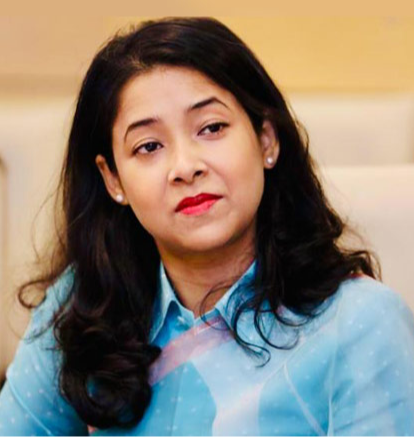The 2023 Conference of Parties (COP28) set high expectations in terms of bold commitments and decisive actions on critical climate issues. However, COP29, held in Azerbaijan from 11 to 22 November 2024, fell short on advancing key issues of climate finance. It also exposed an international lack of ambition and cooperation in tackling the climate crisis. Despite being labelled the “Finance COP”, deliberations around climate financing deepened the divide between developing and developed nations, with many crucial decisions deferred to COP30.
New Collective Quantified Goal (NCQG)
- A resolution on the NCQG was adopted, but the US$300 billion target is a mere fraction of the US$1.3 trillion that developing countries require by 2035.
- The target focuses on funds being “mobilised” rather than directly “provided”, allowing contributions from public, private, bilateral, multilateral, and vague “alternative sources”. This raises questions about accountability and the actual flow of funds. It also lacks legally binding mechanisms to ensure that developed countries meet their finance goal. Developing countries argue that non-public finance, often in the form of loans and grants, makes funding inaccessible.
- The resolution’s adoption process was highly controversial, with many countries claiming that their opposition was overlooked.
- The NCQG is scheduled for review in 2030, which offers the next opportunity to reassess its ambition and effectiveness before the 2035 deadline.
Climate Finance
- The annual climate finance target was raised to US$300 billion—a historic increase but still far from the US$1.3 trillion that developing countries need annually by 2030. This replaces the previous goal of US$100 billion per year, which developed countries also failed to meet.
- A key shift in the agreement is the inclusion of finance mobilised through multilateral development banks (MDBs) toward achieving the goal. While developed countries remain the primary contributors, the new language encourages voluntary contributions from developing countries, further diluting the principle of common but differentiated responsibilities (CBDR).
- The broader target of US$1.3 trillion by 2035, including private-sector flows, was acknowledged as more aligned with developing countries’ needs. A ‘Baku to Belém Roadmap’ was proposed to outline strategies for mobilising the additional funds, but concrete action plans remain vague.
- The current climate finance structure prioritises loans over grants and heavily favours mitigation projects, which offer higher economic returns, reflecting a profitability-driven approach.
- There are minor concessions to vulnerable nations, such as calls for simplified access to finance and recognition of the unique needs of Least Developed Countries (LDCs) and Small Island Developing States (SIDS). However, the agreement lacks specific targets for regions, income levels, or adaptation needs, exacerbating concerns over persistent funding inequities.
Mitigation Work Programme (MWP)
- Discussions on the MWP stalled, resulting in an agreement nearly identical to the previous one, with a focus on continued discussion.
- The impasse arose primarily from developed countries pushing for high-level political messaging and linking the MWP to the global stocktake and Nationally Determined Contributions (NDCs)—a stance strongly opposed by developing countries.
- Developing countries argued that the MWP was being used for top-down target-setting. They successfully opposed and excluded prescriptive references to the “phase-out of coal, fossil-fuel subsidies, and the transition to renewable energy” from the final draft.
Adaptation
- Negotiations on adaptation finance faced several obstacles, particularly regarding the Global Goal on Adaptation (GGA), National Adaptation Plans (NAPs), Means of Implementation (MOI) or financing, and “transformational adaptation”.
- Developing countries insisted on the inclusion of MOI, but developed nations, particularly the European Union (EU), strongly opposed it. The United Kingdom (UK) was a notable exception and may play a key role in advancing negotiations at COP30.
- The Adaptation Fund received a modest boost, with Germany’s 60 million euro pledge, bringing total commitments to US$124 million. However, this still falls short of the US$300 million annual target, underscoring ongoing challenges in mobilising sufficient adaptation finance.
- Developed nations emphasised the need for larger adaptation projects to address long-term climate change impacts, while developing countries argued that “transformational adaptation” could create barriers to funding smaller, urgent adaptation projects. However, despite these concerns, the language was retained in the final resolution.
Loss and Damage
- Despite the launch of the Fund for Responding to Loss and Damage (FRLD) at COP28 and calls to include specific financing for loss and damage in the NCQG, the subject was largely overlooked at COP29.
- Like the previous NCQG target, the current one does not address loss and damage directly, only noting that gaps in funding must be filled through public and grant-based contributions.
- Pledges from countries and subnational entities brought the fund’s total commitments to US$759.4 million. However, this figure is minuscule compared to the estimated US$580 billion in annual losses and damages that developing countries expect to face by 2030.
- The review of the Warsaw International Mechanism (WIM) for Loss and Damage failed to yield significant results. Developing countries advocated for guidelines to report loss and damage in official climate plans and for mechanisms like a regular “loss and damage gap” report. Developed nations opposed these suggestions, relegating these discussions to the upcoming June 2025 climate negotiations.
Looking Ahead to COP30
COP29 showed that, even a decade after the Paris Agreement, international cooperation remains insufficient to address the full scale of the climate crisis. Financial commitments are lacking, and the operationalisation of existing agreements remains underdeveloped. Previous financial targets have failed to inspire confidence, with the US$100 billion target for 2020-2025 being met two years late and achieved partly by relabelling development aid as climate funds. Issues around finance quality, accessibility, and equity continue to undermine trust and collaboration, particularly among developing nations.
As the world looks to COP30 in Belém, the focus must shift to turning targets into tangible outcomes. COP29’s inadequate outcomes underscore the urgent need for a radical shift in global climate action. This includes fulfilling existing commitments, exploring innovative finance mechanisms, and ensuring that financial systems align with the Paris Agreement’s goals, both in letter and spirit. The future success of climate negotiations and the planet’s future will depend on strengthening global cooperation and closing the current attitudinal gap between developed and developing countries.
Aparna Roy is Fellow and Lead, Climate Change and Energy, at the Centre for New Economic Diplomacy at ORF.
Vikrom Mathur is a Senior Fellow at ORF.
The views expressed above belong to the author(s). ORF research and analyses now available on Telegram! Click here to access our curated content — blogs, longforms and interviews.
 PDF Download
PDF Download 

